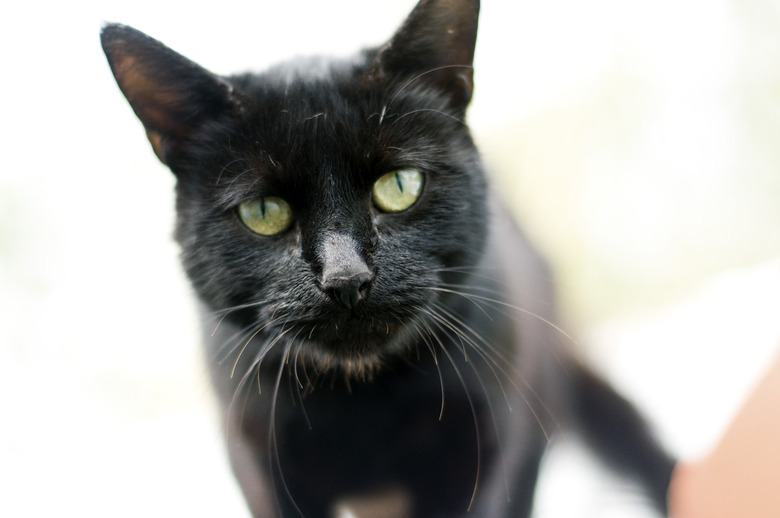How To Feed A Cat Who Won't Eat
Cats who don't eat daily quickly become anorexic and are at risk for hepatic lipidosis, a life-threatening liver disease. Any cat who is not eating should be evaluated by a veterinarian as soon as possible, as a cat who doesn't eat may develop life-threatening complications in less than 24 hours. The vet can determine the cause of the anorexia and the amount your cat should be eating. It may be necessary to force feed such cats; be prepared for a messy job. If you still can't get your anorexic cat to eat after a day of trying, immediately take her to the veterinarian before complications occur.
Try Enticing First
Try Enticing First
You may be able to coax a cat to eat by slightly warming some canned cat food before offering it to your pet. When the food is heated it gives off enticing odors that may make it more appealing. Offer the warmed food to your cat on your finger. If she won't eat it from there, wipe the food onto her lips where she naturally will lick it off. As with all types of hand feeding or force feeding, be patient and take your time. Be gentle and avoid stressing your pet.
Getting Ready to Feed
Getting Ready to Feed
A sick cat may be so lethargic that she is unable to resist your efforts, but most of the time your cat will not appreciate being force fed no matter how hungry she gets. She may fight, bite and scratch. It's best to take precautions to protect both yourself and the cat. When you are ready to feed her, wrap your pet snugly in a thick towel, leaving nothing but her head exposed. Make certain she can't get a foot out from the top or bottom and hold her securely on your lap so she feels safe.
Meal Balls
Meal Balls
Before you force feed your cat, seek your veterinarian's counsel. If she concurs this is the best course of action, take a bit of canned cat food from a 3-ounce can and shape it into a ball the size of a small marble. Put it into the cat's mouth as you would a pill, toward the back of her tongue. Hold her mouth closed to give her time to swallow. Repeat the process. Don't be surprised if a lot of it ends up on you, the towel, the cat or the floor. Remain calm throughout the process to avoid stressing your cat. Too much stress can make your cat's eating problem worse.
Syringe Feeding
Syringe Feeding
Create a meal base from pureed baby food meat with no additives; especially avoid garlic, which can lead to an upset stomach. Put some meat in a bowl and add a squeeze of high-calorie nutritional paste — available from any veterinarian and at some pet shops and feed stores — or some corn syrup. Mix it together well and add enough water to make the mixture runny. Draw the mixture into a large syringe and gently squirt it into your cat's mouth a little bit at a time. Be sure to give your cat time to swallow so she doesn't aspirate it, which can lead to pneumonia.
Always check with your veterinarian before changing your pet's diet, medication, or physical activity routines. This information is not a substitute for a vet's opinion.
References
- Mar Vista Veterinary Clinic: Hepatic Lipidosis
- Cornell University College of Veterinary Medicine Feline Health Center: Anorexia
- Pet MD Cat Nutrition Center: More on Force Feeding Cats
- Dr. Craig Downey, DVM; Bailey Veterinary Clinic; Roseburg, Oregon
- Washington State University College of Veterinary Medicine: Restraining a Cat (paragraph 3)
